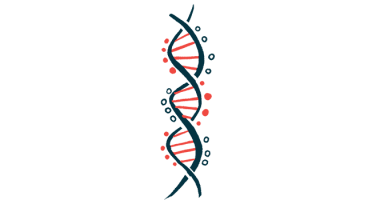PWS Patients Have Lower Levels of ANGPTL8 Protein Linked to Liver Disease, Study Finds

Patients with Prader-Willi Syndrome (PWS) have lower levels of the angiopoietin-like 8 protein (ANGPTL8), which may be a marker for liver disease, than individuals of similar age and size who don’t have PWS, research shows.
The results were reported in the study “Circulating angiopoietin-like 8 (ANGPTL8) is a marker of liver steatosis and is negatively regulated by Prader-Willi Syndrome,” published in the journal Scientific Reports.
Abnormal metabolic and body weight features, including obesity, are common in adult patients with PWS.
For example, compared with test participants who have do not have PWS but have similar body mass index (BMI), PWS patients are more likely to accumulate one particular type of fat, the subcutaneous adipose tissue, compared with another type of fat tissue, the visceral fat tissue.
Additionally, patients with PWS have less muscle function and decreased energy expenditure.
The common assumption is these features would be associated with abnormal insulin levels and type 2 diabetes. However, PWS is characterized by lower insulin levels and higher insulin sensitivity when compared with obese test participants who did not have PWS.
A recently identified liver protein, ANGPTL8, can regulate glucose and lipid metabolism. The role of this protein in obesity and PWS is not well understood.
To address this question, researchers enrolled 40 participants: 20 PWS adults with obesity and 20 BMI-matched individuals who did not have PWS.
Researchers observed several differences between these two groups. Specifically, patients with PWS had significantly lower fat-free mass index and lower resting energy expenditure (the amount of energy a person uses to complete regular bodily functions).
Nonetheless, PWS patients seemed to have a better metabolic profile than their BMI-matched counterparts by having higher HDL cholesterol levels (the “good” cholesterol) and lower levels of triglycerides (a type of fat in the blood).
Liver function tests showed that patients with PWS had less severe liver steatosis compared to BMI-matched participants who did not have PWS. Liver steatosis occurs when cells no longer can eliminate triglyceride fat, so cells begin to accumulate fat. The condition also is known as “fatty liver.”
Patients with PWS had lower levels of ANGPTL8 circulating in the blood.
The team reported that, overall, ANGPTL8 levels correlated with the severity of liver steatosis, suggesting it could serve as a biomarker for liver steatosis.
“ANGPTL8 levels are lower in PWS than obese controls and are inversely associated with the severity of liver steatosis,” the team concluded.
The researchers suggest that “ANGPTL8 levels could act as a novel surrogate biomarker for liver steatosis” and that “further studies are needed to understand the genetic relationship between the lower ANGPTL8 levels seen in PWS.”






